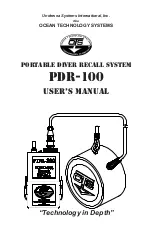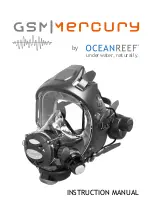
© PCE Instruments
34
Eng
li
s
h
4.7
"Conductivity" Mode
Basics of Conductivity
The SI derived unit for conductivity is the Siemen per meter, but conductivity values are often
reported as % IACS. IACS is an acronym for International Annealed Copper Standard, which is
the material used to make traditional copper electrical wire. The conductivity of the annealed
copper is 5.8 x 107 S/m and copper is defined to be 100 % IACS at 20 °C. All other conductivity
values are related back to this conductivity of annealed copper.
Conductivities of metals at ambient temperature are typically in the range of 1 to 60
MegaSiemens per meter.
The PCE-USC 30 measures the conductivity of non-magnetic metals and alloys in the range 0.8
to 110.0 % IACS. It uses the Eddy Current technique for measuring the conductivity of materials
in % IACS, or MSiemens/meter.
It is important to understand that eddy current measurement is essentially a ‘skin’ effect.
The eddy current field intensity is greatest at the surface and decreases exponentially with
depth. The depth at which the field strength reduces to 1/e (37 %) of its surface value is referred
to as the ‘standard depth of penetration’. This depends primarily on the operating frequency and
the conductivity of the metal.
It is generally considered that materials of thickness greater than 3 standard depths of
penetration can be measured without any correction factors being required. For example, at 60
kHz this figure (the “effective depth of penetration”) is around 0.05” (1.25 mm) in Aluminium
Alloys (conductivity approximately 35
% IACS) and 0.32” (8 mm) in Titanium alloy, (conductivity
approximately 1% IACS). At 500 kHz the corresponding values are 0.02” (0.5 mm) and 0.11”
(2.8 mm).
Care must also be taken when measuring non-homogeneous materials, for example materials
which have been surface heat-treated, clad or plated, or where the surface is rough or corroded.
Measurements at different frequencies will give different results due to the different distribution
of energy within layers of different conductivity. Care must be taken to always measure such
materials at the same frequency (usually 60 kHz).
Setting up the device for measuring the conductivity and the thickness of non-
conductive coatings
To use the PCE-USC 30 for Conductivity measurement requires the following:
-
PCE-USC 30 flaw detector;
-
Standard 60 kHz Probe (CP-13) and Cable (Lemo 12 - Lemo 04 Conductivity).
Conductivity standards of known value in a range from 0.59 MS/m (1.02 % IACS) to 63.8 MS/m
(110 % IACS). To connect the flaw detector with Cable and the eddy current probe CP-13 for
measuring the electrical conductivity.
Connect the flaw detector with cable and the eddy current probe CP-13 for measuring the
electrical conductivity.
ATTENTION!
THE INSTRUMENT SETUP AND ELECTRIC CONDUCTIVITY
MEASUREMENT SHOULD BE CARRIED OUT AT AN AMBIENT AND TEST OBJECT
TEMPERATURE OF 20 ˚ С (68 ˚ F). BEFORE CARRYING OUT THE SETTING UP
PROCEDURE AND ELECTRIC CONDUCTIVITY MEASUREMENT, IT IS REQUIRED THAT
THE INSTRUMENT TO BE OPERATED AT LEAST OF 15 MINUTES AT A TEMPERATURE
OF 20 ˚ С (68 ˚ F).
















































